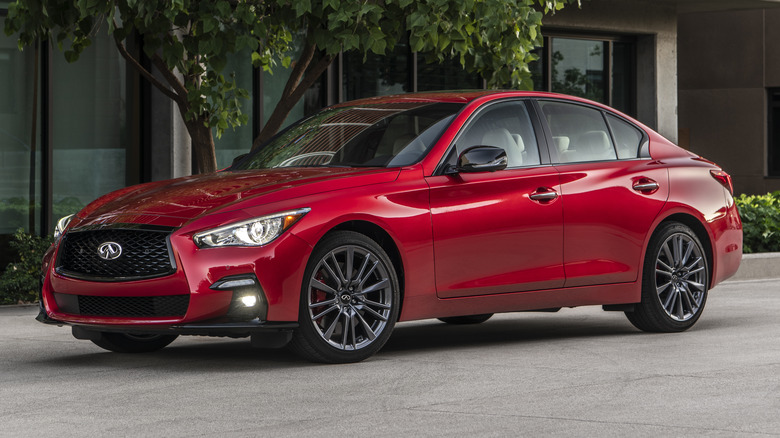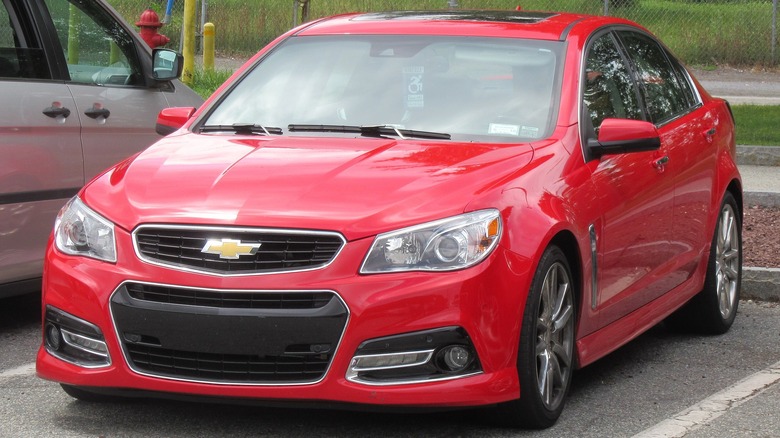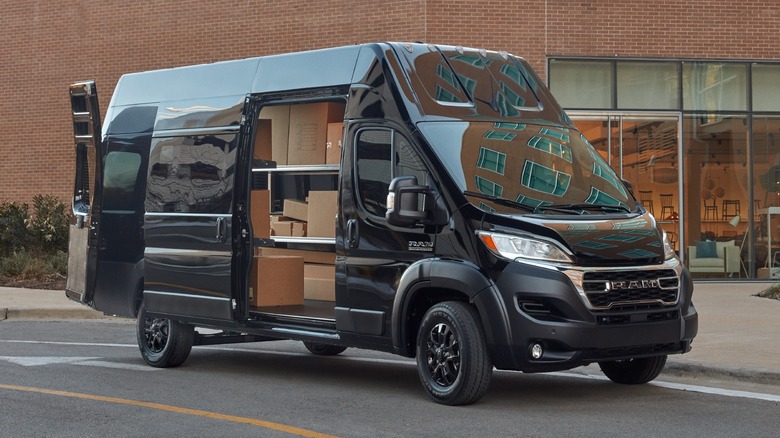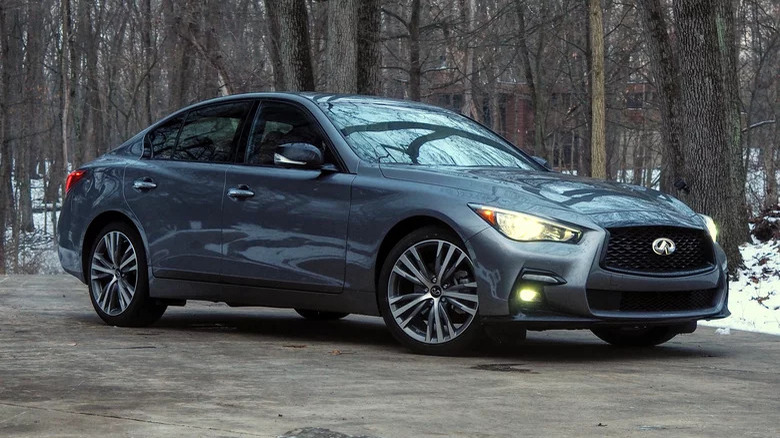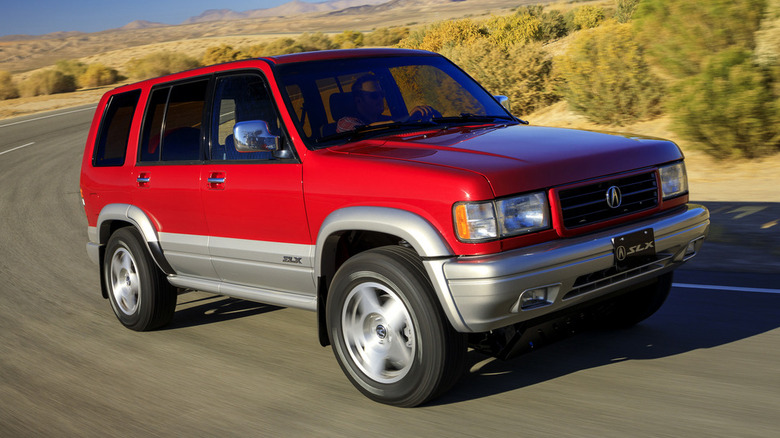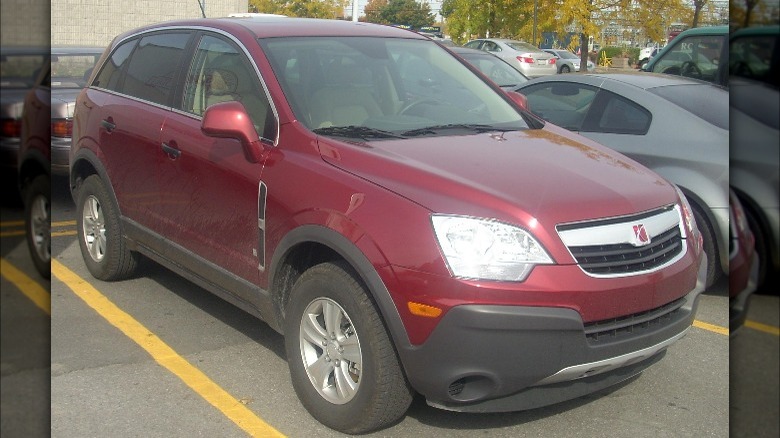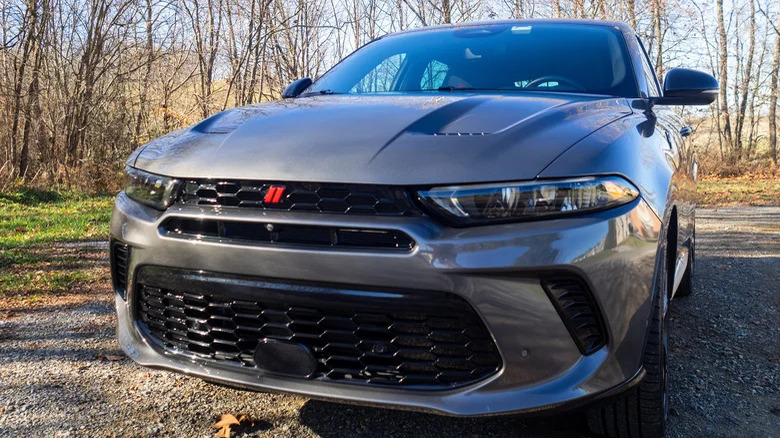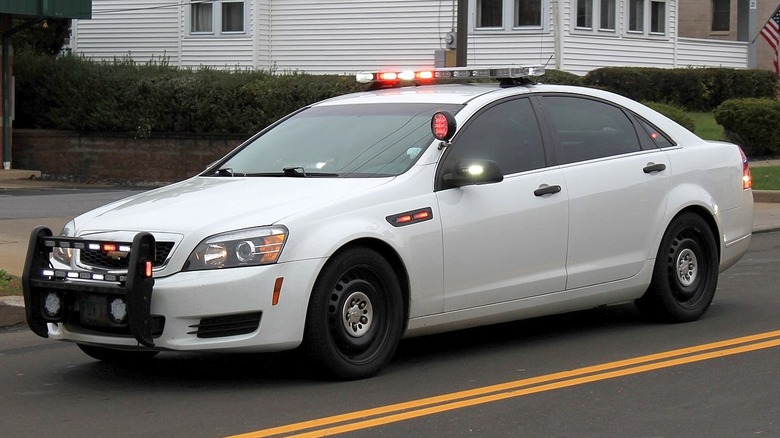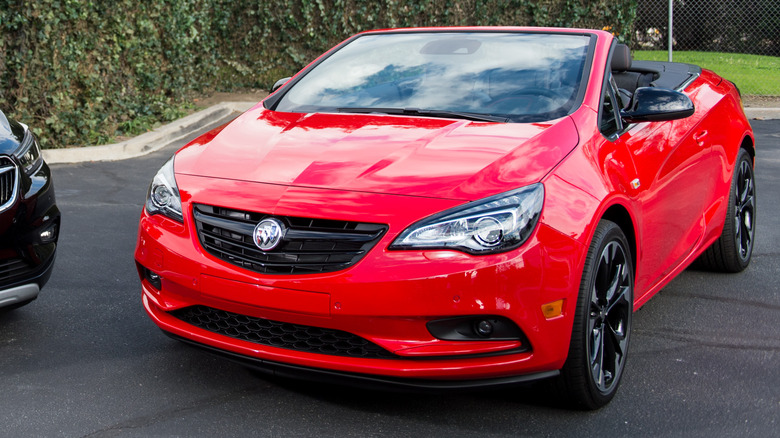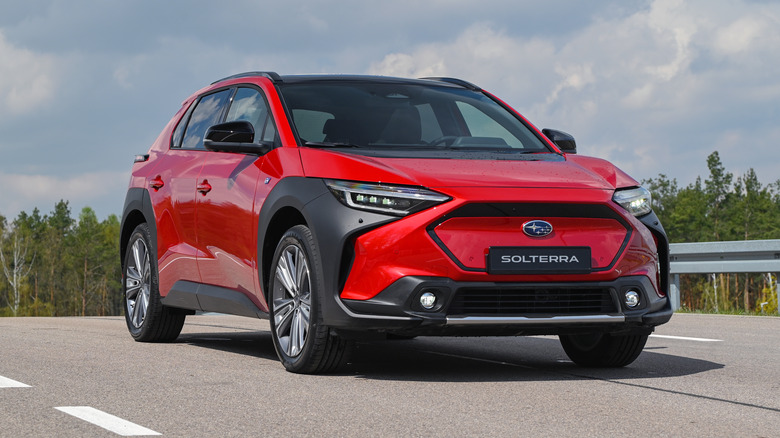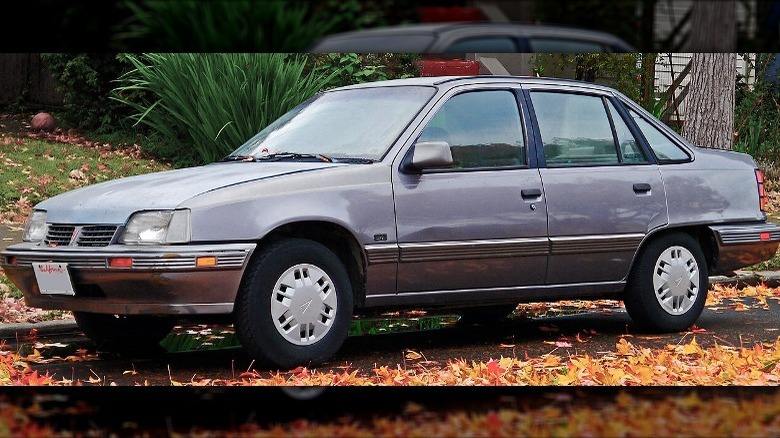10 Cars You Probably Didn't Realize Were Rebadged Models
Predicting car market trends is notoriously difficult. Buyers' tastes can change drastically in the space of a year or two, and this volatility can sometimes catch manufacturers off guard. There are a few solutions to adapting to changing tastes: the first is to develop an entirely new car in-house. However, this is a very costly, time-consuming process, and so many manufacturers choose a second option as a temporary solution. Instead of developing a car of their own, they simply borrow someone else's car and stick their badge on the front.
This is called badge engineering, and the practice has been commonplace since the early days of the car industry. Alongside patching temporary gaps in their lineups, automakers also use badge engineering to market cars in a territory where buyers aren't familiar with the original brand. A few manufacturers like GM became especially well known for repurposing cars to sell under different brand names, although some of these badge jobs flew under the radar of most buyers. These lesser-known examples showcase both past and present.
Chevrolet SS (Holden Commodore)
A true sleeper sedan thanks to its 415 horsepower V8 engine and nondescript looks, the Chevrolet SS was a short-lived model only produced between 2014 and 2017. It was a badge-engineered version of the Australian market Holden Commodore, with only a few minor differences between the two cars. Previous Holden muscle cars had been sold in North America under the Pontiac badge — for example, the 2004 GTO and 2008 G8 — with each undergoing styling tweaks to ensure that the U.S. market cars looked at least a little unique.
No such privileges were given to the SS, which aside from its Chevrolet badging was essentially identical to the Aussie-market Commodore it was built alongside. It did gain a slightly altered lower rear diffuser to accommodate dual exhausts rather than the quad exhausts available with the Commodore, and its suspension tune was Chevy-specific. Other than that, the SS was exactly the same as the Australian muscle car.
Despite its performance chops and family-hauling practicality, the SS was never a big hit stateside. Around 13,000 examples were sold before GM axed its entire Australian manufacturing operation, bringing the Chevy's production run to an end alongside its Holden-badged counterpart.
[Featured image by Jason Lawrence via Wikimedia Commons | Cropped and scaled | CC BY 2.0]
Ram ProMaster (Fiat Ducato)
The Ram ProMaster van has been on sale in North America for around a decade now, and in that time it's built a solid reputation as a workhorse. While it was originally launched with commercial use in mind, the ProMaster has also gained a following as a campervan conversion, alongside the Mercedes-Benz Sprinter. At first glance, it might seem like the Ram is the all-American choice while the Mercedes-Benz offers a European take on the segment. However, that's not entirely the case.
To help with its brand recognition in North America, Mercedes chose to sell the Sprinter under the Freightliner brand when it first launched in 2001. As the Mercedes-badged variant grew more popular, the Freightliner version was axed. The ProMaster, by contrast, has only ever been sold under the Ram brand in the U.S. That's despite the fact that it's a badge-engineered Fiat underneath.
The ProMaster is sold in Europe as the Fiat Ducato, with the Ram design being adapted from the Euro-spec van. While the Pentastar V6 engine is unique to the Ram, the EcoDiesel engine is a direct carry-over from the Fiat version of the van, as is the exterior styling and chassis design. The Ram van has its own production line in Mexico, while the Ducato is made in Italy. Other than that, there are very few differences between the Ram and the Fiat variants of the van.
Infiniti Q50 (Nissan Skyline)
While upmarket brands from rival Japanese manufacturers have managed to carve out a niche in the fiercely competitive premium car market, Nissan's Infiniti arm has always struggled to make much of an impression. Its Q50 sedan is a prime example, with little to recommend over its rivals despite the fact that there's not much that's objectively bad about the car. It's simply not unique enough: it needs more power, more luxury, or perhaps even a more attention grabbing name. A name, for example, like the Nissan Skyline.
The Skyline has become one of the best known JDM nameplates ever, yet many American enthusiasts might not be aware that it's still sold today in Japanese dealerships. The Q50 is in fact a badge-engineered JDM Skyline, with the Japanese-market car boasting the same 400 horsepower engine as the Q50 Red Sport. The limited-run 2024 Skyline Nismo boosts that power figure even more, with 414 horsepower on tap, plus suspension tweaks and wider, stickier tires.
Only 1,000 examples of the Skyline Nismo will be made, but the regular Skyline can be bought in Japan from as little as 4.86 million yen, around $31,000. The 2024 Q50, by comparison, costs at least $43,000. While it remains in Infiniti's North American lineup for now, it's not clear how much longer the Q50 will survive amid the decline in premium sedan sales.
Acura SLX (Isuzu Trooper)
The Isuzu Trooper was marketed under a wide range of different names during late '90s, being badged as everything from a Subaru to a Chevrolet depending upon which market it was sold in. In the U.S., its most successful rebadge saw it sold as the Acura SLX, which served as the brand's first and only SUV when it launched in 1996. It was sold as an Acura for much the same reason as it was sold under its other names: buyer tastes were beginning to shift towards SUVs, yet many manufacturers didn't have anything in showrooms to sell them.
Isuzu was happy to sign manufacturing deals with seemingly any manufacturer it was approached by, and as a result, the Trooper received half a dozen rebadges within the space of a few years. The Acura SLX was one of the most luxury-oriented variants of the SUV, and initially won praise from the press, but sales would quickly tail off.
A run of negative press about the Trooper's alleged rollover tendency didn't help, but the SUV was only ever intended to be a stopgap in Acura's lineup anyway. By the turn of the century, most manufacturers had developed their own SUV designs, and so no longer needed the rebadged Isuzu. Acura dumped the SLX after 1999 to launch the MDX, which had been designed in-house by parent company Honda.
Saturn Vue (Opel Antara)
In the twilight years of Saturn's existence, shortly before it was killed off by GM's bankruptcy, the brand renewed its compact Vue crossover with an all-new generation. It was launched for the 2008 model year, and was borrowed from one of GM's European subsidiaries, Opel. The crossover was designed in Europe by Opel and sold there as the Antara, and with GM's dire financial situation at the time, it made no sense to develop an America-specific Saturn to fill the same market segment. So, the Antara was borrowed wholesale, without any major styling or mechanical changes.
As a result, the Vue boasted a more upmarket interior than other Saturn products, as well as slightly sportier handling. However, there was little time for the freshly imported crossover to find an audience in the U.S., as by 2009, GM had announced its plans to shutter the brand and its production facilities for good. The Mexican factory making Saturn's not-an-Opel was closed shortly after the announcement was made, with the Saturn brand itself phased out by 2010.
[Featured image by Bull-Doser via Wikimedia Commons | Cropped and scaled | Public Domain]
Dodge Hornet (Alfa Romeo Tonale)
The Dodge Hornet and Alfa Romeo Tonale are based on the same platform and share many of the same parts, although Dodge's design department did more than simply slap a different badge on the front of the car. Unlike many badge-engineered specials, the Hornet boasts unique styling, a different handling setup, and a notably lower starting price.
Unfortunately, in borrowing an Alfa Romeo SUV, Dodge also appears to have inherited some of the Italian brand's infamous electrical troubles. During SlashGear's time with the 2024 Dodge Hornet R/T PHEV, our reviewer experienced several issues with the electrics, although none were serious enough to impact the car's overall driveability. While we came away impressed with the car's powertrain and interior space, its issues were enough to sow some doubt over its reliability in the long run. Ironically, our review of the 2024 Alfa Romeo Tonale PHEV saw no such electrical issues crop up.
Chevrolet Caprice PPV (Holden Caprice)
Serving as the precursor to the Chevrolet SS, the Chevrolet Caprice PPV was reserved exclusively for emergency service use and never sold in civilian guise. It was a rebadged version of the Holden Caprice, with some minor mechanical and interior tweaks to make it optimal for law enforcement duties. The Caprice was sold in Australia as a larger, more upmarket version of the Commodore, on which the Chevrolet SS would later be based. Some enthusiasts struggled to warm to the SS thanks to its Aussie roots, but police departments had no such troubles with the Caprice PPV, making it a common sight across America.
It was GM's decision to close the Holden plant in Australia, not weakening demand, that led the Caprice PPV to be axed after 2017. Although the car was never available new to civilian buyers, it only took a few years for decommissioned ex-police examples to find their way onto used lots. With tough, powerful engines and attractive used prices, the Caprice PPV has built up a cult fanbase in the years since discontinuation. Some private buyers have chosen to rebadge their cars with Holden badges to reflect their Aussie origins.
[Featured image by Raymond Wambsgans via Wikimedia Commons | Cropped and scaled | CC BY-SA 2.0]
Buick Cascada (Opel Cascada)
Like many badge-engineered cars, the Buick Cascada was created as a temporary solution to its maker having a hole in its lineup. Buick didn't have an open-top, luxury halo car, and so borrowed the Cascada from its European cousins at Opel. The trouble was, the Cascada didn't really fit the bill for what Buick needed. It wasn't all that luxurious, it didn't drive especially well, and its styling was unremarkable at best. It didn't help that the Opel-badged variant had been on sale in Europe since 2012, making it already a dated car by the time it arrived in America in 2016.
It survived only until 2019, when it was axed without a successor. In the years it was on sale, Buick sold a mere 17,000 units. European sales of the Opel-badged Cascada reportedly weren't much rosier, which is what led to its cancellation without a replacement being developed. Buick has not unveiled a convertible car since, instead pivoting its lineup to focus on more lucrative SUVs and crossovers.
Subaru Solterra (Toyota bZ4X)
While Toyota's and Subaru's previous collaborations — including the BRZ/86 — have involved significant development from both manufacturers, the Solterra/bZ4X saw Toyota do all the heavy lifting. Both cars are built on the e-TNGA platform, developed by Toyota, and Subaru's exterior design is only minimally different from that of Toyota. There are a few small differences in MSRP, but both cars still compete in the same price bracket, too.
The Subaru Solterra exists for the same reason that most badge-engineered cars do. Being a smaller manufacturer, the costs for Subaru to develop an EV platform by itself would have been prohibitively high, and so it was a better option for the brand to simply borrow someone else's EV, in this case Toyota's. Subaru is reportedly planning to launch its own in-house EVs by 2028, and until then, will continue to release more rebadged Toyota EVs to flesh out its lineup.
Pontiac LeMans (Daewoo LeMans)
The Pontiac LeMans nameplate has a long history stretching back to the brand's golden years, but the final iteration of the LeMans was not its greatest. It was a rebadged Daewoo LeMans, made by GM's Korean subsidiary, which itself borrowed the design and platform of the European Vauxhall Astra. The Pontiac was launched in 1988, by which time the underlying Astra design was already around half a decade old.
Add that to the fact that the Pontiac was lumped with Daewoo's range of sluggish motors rather than the sprightlier Euro-spec engines and it's easy to see why the car was never a huge hit. Its sales figures weren't too shabby for the era, however, with almost 240,000 examples sold. Very few of those examples remain on the road today, as no-one really cared enough about the car to preserve it. Ironically, that makes it a rarer sight today than many European exotics.
[Featured image by Mic via Wikimedia Commons | Cropped and scaled | CC BY 2.0]
